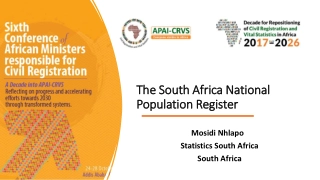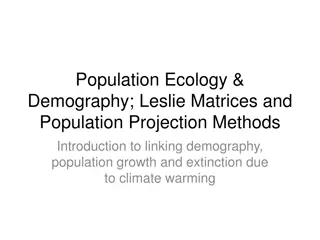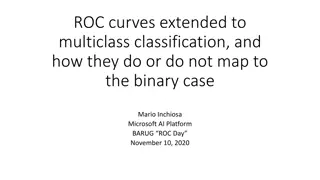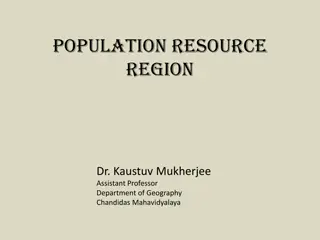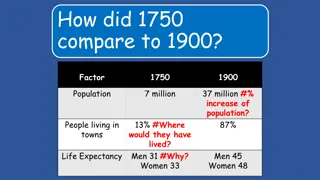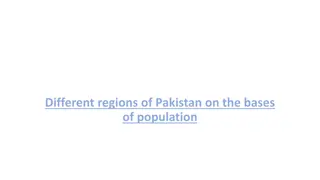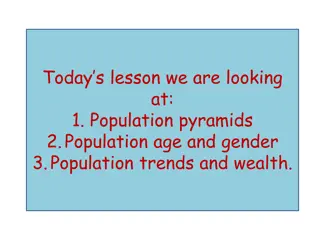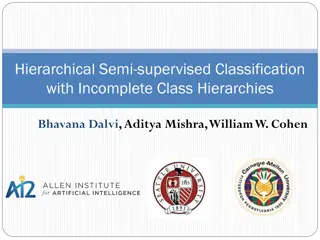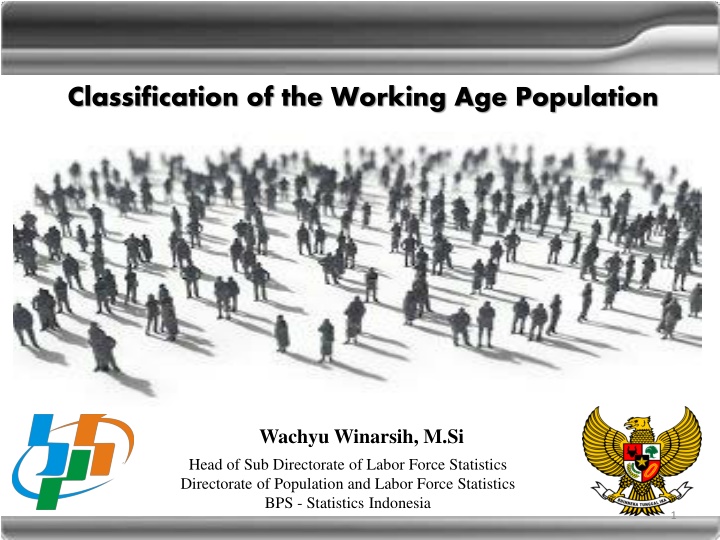
Working Age Population Classification in Indonesia
This information provided by BPS - Statistics Indonesia highlights the classification and features of the working-age population. The classification is based on the person's relation to the labor market within a short reference period, following the Activity principle. The main objective is to monitor labor market changes and provide a snapshot of the labor market at a given time. The 1-hour criterion is used to ensure a comprehensive classification into Employed, Unemployed, and Outside the Labor Force categories.
Download Presentation

Please find below an Image/Link to download the presentation.
The content on the website is provided AS IS for your information and personal use only. It may not be sold, licensed, or shared on other websites without obtaining consent from the author. If you encounter any issues during the download, it is possible that the publisher has removed the file from their server.
You are allowed to download the files provided on this website for personal or commercial use, subject to the condition that they are used lawfully. All files are the property of their respective owners.
The content on the website is provided AS IS for your information and personal use only. It may not be sold, licensed, or shared on other websites without obtaining consent from the author.
E N D
Presentation Transcript
Classification of the Working Age Population Wachyu Winarsih, M.Si Head of Sub Directorate of Labor Force Statistics Directorate of Population and Labor Force Statistics BPS - Statistics Indonesia 1
BPS - Statistics Indonesia Contents Main objectives and uses Principles of the classification Impact of new resolution on classification Labour force concept Main changes 2
BPS - Statistics Indonesia Main objectives and uses Most widely used classification for labour market monitoring Provides information about persons relation to the labour market at a given point in time Snap-shot picture of labour market in a given period Enables monitoring changes in labour markets Does not reflect the situation in the whole year; better data quality Not main status of person! It identifies persons engaged in the labour market 3
BPS - Statistics Indonesia Main features Classifies the population of working age According to its relation to the labour market In short reference period Based on Activity principle What the person did Priority rule Employment over other activity Employment over unemployment Unemployment over outside the labour force 1-hour criterion 4
BPS - Statistics Indonesia Main features 3 mutually exclusive & exhaustive groups Based on activity principle, priority rule & 1 hour criterion Total population Outside Labour Force Employed Unemployed Min. age threshold Labour force 5
BPS - Statistics Indonesia 1 hour criterion Relevance Reasons Ensures mutually exclusive and exhaustive classification of working age population into the three categories (Employed, Unemployed, Outside the labour force) To cover all types of employment including short-time work, casual work, stand-by work, & other irregular employment To capture all labour inputs from employment activity into production (for national production accounts) 6
BPS - Statistics Indonesia Short reference period 7
BPS - Statistics Indonesia Labour force status classification Activity principle + priority rule + 1 hr. criterion Working age population (a + b + c) In short reference period, worked for pay / profit for 1+ hours Y N NOT EMPLOYED (without work for pay/ profit) Seeking work for pay/profit With job for pay / profit, not at work N Y N Available Y Y N a. Employed b. Unemployed Labour force (a + b) c. Outside the labour force 8 8 ILO Department of Statistics ILO Department of Statistics 8
BPS - Statistics Indonesia Employment & unemployment statistics as per previous standards.... Above minimum age ...: ALL OTHERS, whether or not: -Provide services for own final use -Volunteer providing services for households ALL who work for pay ALL who work for profit ALL who produce goods for own final use Not employed ALL who work for training ALL who volunteer for organizations Who volunteer to produce goods for households Seeking work AND / OR available for work Yes No Employed Unemployed Inactive Currently active pop. (employed + unemployed) 9
BPS - Statistics Indonesia Employment & Unemployment as per the NEW standards.... ALL OTHERS > age, whether or not: Above minimum age ...: -Provide services for own final use -Volunteer providing services for households -Work unpaid for training ALL who work for pay ALL who work for profit -Employers -Own account workers in market units -Contributing family workers -Members of market producer cooperatives -Produce goods for own final use -Volunteer through / for organizations Volunteer producing goods for households Not employed (for pay/profit) Seeking AND available for work for pay/profit Yes No Persons in employment (work for pay / profit) Outside the labour force Unemployed Labour force Underutilized labour (with unmet need for employment (for pay/profit) 10 10 ILO Department of Statistics
BPS - Statistics Indonesia 230 Working Age Population (WAP) Employed Employed Producers of goods for own final use In paid employment 14 100 Not employed Volunteer workers 5 Self-employed in market units Unpaid trainee workers 1 30 80 Unemployed Outside labour force Unemployed Outside labour force 20 5 60 15 NEW 19th ICLS (2013) 130 Change 13th ICLS (1982) 150 57% 65% Employed 25 155 75 16% 67% 33% 20 170 60 12% 74% 26% Unemployed Labour force Outside labour force 11
BPS - Statistics Indonesia Labour force Concept Refers to the current supply of labour for the production of goods and services in exchange for pay or profit Para 11,Resol I. (19th ICLS, 2013) Labour force = Employed + Unemployed Focuses on work transacted for pay or profit Always measured in reference to a short reference period Provides snap-shot picture of labour market at a given point in time Serves to monitor labour market responses to economic cycles 12
BPS - Statistics Indonesia Main changes (1): Summary Labour force status becomes the recommended classification of population for labour market monitoring and analysis Always measured in short reference period Usual activity classification no longer recommended in international standards However, countries may collect retrospective information to employment situation over a long observation period (season, year, ...) Employment defined more narrowly to refer to work for pay or profit Persons exclusively in other forms of work no longer included in employment Simplified guidelines for temporary absence from employment Unemployment defined in reference to work for pay or profit Persons in other forms of work are asked questions on job search & availability Relaxation of job search criterion no longer an option New measures of labour underutilization to complement unemployment Time-related underemployment and potential labour force 13
BPS - Statistics Indonesia Main changes (2): Terminology Labour force = Employed + Unemployed (for pay / profit) (without employment + seeking + available) No longer economically / currently active population Outside labour force No longer economically inactive population No longer includes population below minimum age -ALL forms of work are productive & contribute to the economy -Persons outside labour force may be engaged in other forms of work -Children may be engaged in work, including in child labour 14
BPS - Statistics Indonesia Quiz: In the labour force or not? 1. Person buying and re-selling books on the street who recently completed an interview for a job at a library In labour force (Employed) Full-time student seeking paid internship at a business to start now In labour force (Unemployed) Volunteer at a hospital available to start working as nurse Outside the labour force (potential labour force) Housewife who cooks food for construction workers for pay In labour force (Employed) Person who grows rice for family consumption and has applied, with other farmers, for a bank loan to start a rubber plantation In labour force (Unemployed) Person who worked as domestic worker abroad, returned a month ago and plans to start looking for paid work soon Outside the labour force 2. 3. 4. 5. 6. 15
BPS - Statistics Indonesia References: 16
Thank you Thank you 17

